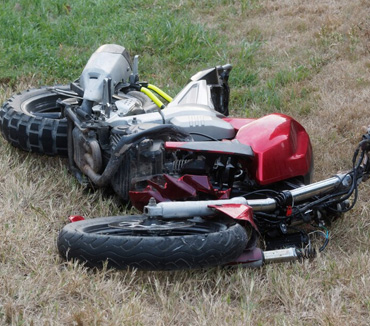Who Are Plaintiffs and Defendants in a Personal Injury Case
In personal injury cases, there are two sides: the plaintiff and the defendant.
A plaintiff is a person, a personal representative, or a corporation who claims that they have been wronged and are entitled to money damages. A defendant is the person who has been sued. The lawsuit begins when a plaintiff files a complaint. The complaint is a document that outlines the general facts of the case and the plaintiff’s theories of why he is entitled to recover damages.
That’s the basic answer. Read on to find out the specifics of each party in a personal injury case.
What Is a Personal Injury Lawsuit?
A personal injury lawsuit is a civil action filed by an injured person against the person or entity responsible for their injuries. The person who has been injured and files the case is referred to as the “plaintiff,” and the people he or she sues are referred to as the “defendant(s).” The goal of a personal injury lawsuit is to recover damages, financial compensation & for the injuries caused by the negligence or recklessness of another.
Personal injury lawsuits are typically filed after an accident or injury has occurred, and can be filed against individuals, businesses, or government entities. If you have been injured in an accident, you may be wondering if you have a personal injury case. The best way to find out is to speak with an experienced personal injury attorney at Duque Law Group who can evaluate your case and advise you on your legal options.
Who Are the Plaintiffs and Defendants in a Personal Injury Case?
Two of the essential words that you are going to encounter in the legal process are the terms “plaintiff” and “defendant.” You may have heard these phrases, but you may be unsure of what they mean.
Here’s what you need to know about each party in a personal injury case:
The Plaintiffs: The Injured Party or Parties
The plaintiff in a personal injury case is the person who initiates the lawsuit. They are the person who says that they have a legal claim against someone else. They say that someone else committed a legal wrong against them.
In a personal injury case, the plaintiff is the person who wants someone else to compensate them. They believe that they were hurt or are suffering losses because of the legal wrong committed by someone else. It is the goal of a plaintiff in a personal injury case to have someone else compensate them for losses they sustained because of their injuries.
Sometimes, the plaintiff can be a party suing on behalf of someone else who lacks the legal capacity to sue on their own. For example, minor children have limited rights to sue in court; if your child was hurt in an accident, you might sue on your child’s behalf.
There can be more than one plaintiff. For example, the plaintiffs may be several people harmed by a defective product.
The Defendants: The Responsible Party
The defendant is the person who is being sued. They are the person identified in the complaint by the plaintiff as causing the injuries. The plaintiff usually wants to make the defendant pay for economic and non-economic damages. In California, this can include medical bills and pain and suffering.
Once a lawsuit has been initiated, the Defendant has no choice but to settle or defend themselves. Some defenses included contributory negligence or assumption of risk. If the Defendant has an affirmative defense, the case may be dismissed.
In some cases, the Defendant may be an insurance company that is refusing to pay when it is fairly due or a corporation that manufactured a bad product. There can also be several Defendants who are jointly responsible, for example, an insurance company and the insured.
A Defendant Can Bring a Counter-Claim or a Cross-Claim and Become a Plaintiff
When a defendant receives their summons and complaint and realizes that they are a party to a lawsuit, they have an opportunity to respond to the allegations. One of the things that they can do is accuse someone else of a legal wrong. They can respond by essentially pointing the finger at someone else, known as a cross-claim. When they add claims against someone else, they also become a plaintiff in the case. They are still a defendant, but they become both a plaintiff and a defendant at this time.
Who Begins a Personal Injury Case?
The plaintiff is the person who starts a personal injury case. They begin the case by filing their claim in the court. You aren’t actually a plaintiff until you formally file your first paperwork in court. You may be a victim from the moment the personal injury accident occurs, but your status changes to plaintiff when you formally bring your case. The person who begins a formal legal case is called the plaintiff.
The first document filed in most personal injury lawsuits is called the “complaint.” The filing of the complaint effectively begins the lawsuit.
Most states have at least 3 different court systems where you might file your complaint. In almost all cases, there will be a “fee” for filing the complaint. This fee varies by state and court, but generally ranges from $30-$300.
The complaint typically includes the following information:
- The identities of the parties involved
- The legal basis for the court’s jurisdiction over the lawsuit
- The legal claims
- The facts related to the legal claims
The Plaintiff Has the Burden of Proving the Case
All legal cases, whether civil or criminal, have certain evidence-related thresholds that must be met before a defendant can be found guilty or liable. The “burden of proof” refers to just how convinced the judge or jury must be before believing something.
People commonly understand this to mean how convinced the judge or jury is of the case as a whole, for example whether a criminal defendant is guilty of murder “beyond a reasonable doubt.” However, the burden of proof applies to each individual element in a claim.
It is the responsibility of the plaintiff in a personal injury case to prove the facts of the case. The plaintiff must show that someone else owes them compensation. As the plaintiff, you must gather the evidence to prove your case. You must present your evidence to the jury. Ultimately, careful case preparation is crucial to helping the judge or jury understand what happened to cause your injuries.
What Does a Plaintiff Have to Prove to Win the Personal Injury Case?
Most personal injury cases are based on negligence. If you are a plaintiff, you must prove a defendant is liable to you in order to prevail in a personal injury case. The specific elements of your claim vary based on whether the tort was an intentional tort, whether the defendant was negligent or whether strict liability rules apply.
You also need to show the defendant was directly responsible for harming you through their actions or inactions and that you suffered losses you can be compensated for. It is up to you to show the extent of how badly you were harmed.
You usually need to prove your claim by a preponderance of the evidence. This means that more likely than not, the evidence you are presenting is accurate and shows the defendant should be held liable for your losses under the law.
Should You Speak with an Attorney?
Our legal team at Duque Law Group is comprised of award-winning and nationally recognized trial lawyers who collaborate with nurses, doctors and medical experts regularly. Though we understand the nature of injuries, we are not physicians, and always encourage victims to seek treatment as soon after an accident as possible, and to follow up and heed their doctors’ advice.
Call us now at 1-877-241-9554 to learn more about your options. A free consultation is just a phone call away.
Request A
Free Consultation
Fields Marked With An ” *” Are Required











